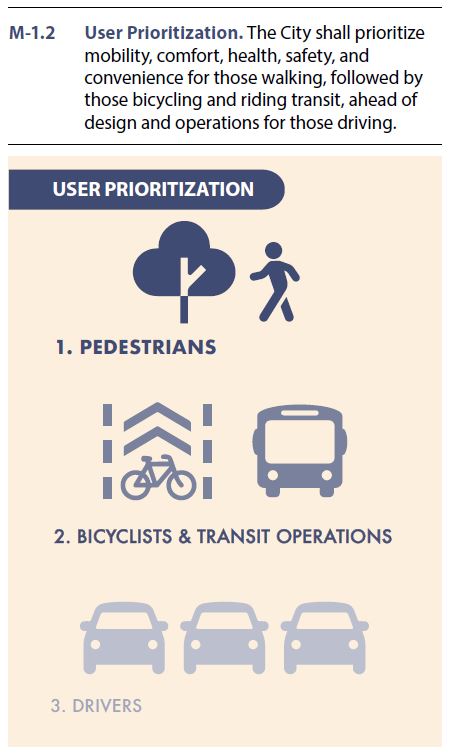This post is part of a Street Design Standards series.
We are Strong SacTown — Streets for People, a group of Sacramentans advocating for updated street designs that will rank safety, livability, and economic vitality above vehicle throughput or speed; where congestion relief will not be the goal in street design.
The City of Sacramento is updating the street design standards for the first time since 2009. The city is embarking on this effort as it is becoming increasingly apparent that the existing standards do not meet the needs of all users in the modern era.

Pedestrians and bicyclists in the city are being killed in record numbers, car crashes are near decade-highs, and Sacramento is suffering from one of the highest rates of traffic fatalities per capita among California cities. Communities and businesses are demanding new and innovative uses for the public right-of-way, the city is tackling climate change and a deferred road maintenance deficit projected to exceed $1 billion in the next 7 years, and tens of thousands of Sacramentans will be aging out of their ability to safely operate a vehicle.
Many of our following recommendations address improving safety in the right-of-way, but nothing short of a complete overhaul of how our public domain is designed will be able to address the many competing needs of the city and move Sacramento into a safe, livable, and economically vibrant future.
To that end, we have compiled several guiding principles that we would like to see incorporated in the new standards. Subsequent posts will focus on providing additional details and examples with these tenets in mind:
We at Streets for People assert:
- The status quo is not working
- The 5,000+ traffic injuries and deaths on Sacramento roads every year are preventable, many through design changes to our street.
- Although a Vision Zero goal was adopted in 2018 (no traffic deaths by 2027), annual car-related deaths since have gone up by 50%.
- Street designs are often unable to meet community needs due to existing outdated and auto-centric standards.
- Reforming street designs is an integral part to achieving Vision Zero
- Speeding kills. Unsafe speed is the leading cause of crashes in Sacramento and addressing speed through design is a fundamental step to making our roads safer.
- Streets must be designed for the desired speed of travel, but no faster. If drivers feel comfortable going faster than the target speed, the street geometry must be reconfigured.
- Education and enforcement have been unable to address systemic safety issues, physical design is necessary (and has been proven) to discourage unsafe behavior.

- Streets are for more than just transportation
- Streets must also be considered as destinations that support a variety of activities.
- Well-designed streets offer a multitude of community benefits including shade, economic vitality, networking opportunities, encounters with nature, and social gathering places.
- Streets with greenery provide vital environmental benefits. They can clean our air and water, reduce flooding, cool our homes, and support a diverse animal population.
- Streets must be (re)designed from the outside in
- Streets must be designed beginning with the most vulnerable users. Per the adopted Sacramento 2040 General Plan prioritization, street redesigns should start with the pedestrian domain and design inward.
- 3 in 10 Americans do not have drivers licenses and the current right-of-way often does not meet their mobility needs. We must implement our complete streets policy with both 8- and 80-year-olds in mind.
- Design choices at times can be both political and practical, and engineers should never be exposed to liability for designing a safer street for vulnerable users.
- Most streets will not be wide enough for all needs, standards must be flexible and flexibility must begin in the general vehicle lanes.
- Saving lives requires a financial investment
- Redesigning streets to reduce injuries and fatalities costs more than simple repaving, but the safety and societal benefits far outweigh the costs.
- The city funds roads at the lowest level among all major CA cities. Updated standards can not be implemented without sufficient funding.
- Political leadership is required to ensure funding is available – we will not achieve Vision Zero without it.
We believe everyone is in favor of safe and vibrant streets and will offer a series of suggestions on ways we believe this can be achieved. Check back regularly for more updates.
Editors note: There are many extremely talented people both within the city and without already doing tremendous work to improve our streets! If you have ever run into a standard (or lack of) that has caused an issue and needs fixing, please drop a line.
Leave a Reply